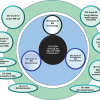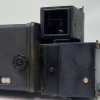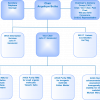Peter J. Jenks, BSc, MRSC
The Jenks Partnership, Newhaven House, Junction Road, Alderbury, Salisbury, Wiltshire SP5 3AZ, UK
Since I started contributing to this column almost 10 years ago Certified Reference Materials (CRM) and Proficiency Testing (PT) have become ever more important to the lab supply industry and in some analytical sectors have become almost commodity products. As a result we now see two global lab supply companies fighting to become the leading supplier of CRMs and PT with the result that in the last two years both Sigma Aldrich and LGC Standards have significantly increased the range of CRMs and PT offered, both by expanding their own production and by acquiring smaller producers of CRMs.
Why has this happened and what has driven this growth? Quite simply it is not possible to comply with the requirements of ISO 17025 and achieve accreditation as a testing laboratory without making almost daily use of CRMs and PT. So as more and more analytical laboratories gain ISO 17025 accreditation the demand for and use of CRMs and PT grows.
For many years, since the first CRMs appeared at the turn of the 20th Century, the production of CRMs was mostly left to the public sector with bodies such as the US National Institute for Science and Technology (NIST) and the European Union’s Institute for Reference Materials and Measurement (IRMM) developing materials to meet new metrological challenges. The approach was academic and the development costs largely paid out of public funds. In the pharmaceutical industry the major pharmacopeia introduced reference substances (RS), which occupy the same metrological position as a CRM. Although, until recently, the Pharmacopeia operated independently of the rest of the metrological community, the world is changing because USP now has ISO 34 accreditation for their reference materials lab and has started to issue Pharmaceutical RS as CRMs and EDQM, who issue European Pharmacopeia RS, are expected to follow with Guide 34 accreditation and Certified RS within the next two or three years!
In the 1980s the gradual privatisation of analytical services formerly delivered by public sector laboratories began. This was associated with the introduction of standard methods and mandatory quality systems linked to compulsory accreditation of analytical laboratories with the aim of ensuring that the quality systems were followed and quality standards met. The result was a growing demand for CRMs and PT needed to support the new quality systems. Over the next 20 years Governments around the world have continued to outsource activities once delivered by civil servants so the demand for CRMs and PT has continued to increase. Further drivers include increasing concern over public health and outsourcing by multi-national companies looking to control costs. In the first case this concern means that there is ever growing regulation of drinking water, wastewater and contaminated land in the “BRIC” and other developing economies. In the second case efforts to contain costs mean that many routine activities, once carried out “in house” are sub-contracted to external contractors with the accreditation of the contractor laboratory to ISO/IEC 17025 serving to demonstrate to the customer the lab’s competence and reliability.
This ever-increasing demand for CRMs and PT services accelerated through the last decade of the 20th Century and into the 21st. It soon became very clear that the traditional producers of CRMs and suppliers of PT would be unable, or unwilling, to meet demand. Inevitably demand was met by small, specialist companies that saw an opportunity and moved into the market, offering products of many and varied qualities. The response of the Accreditation “industry” was to develop schemes for the accreditation of CRM producers and the providers of PT. The result was the acceptance of accreditation to ISO/IEC 17043 as a standard for the accreditation of PT suppliers and accreditation to a combination of ISO/IEC 17025 and ISO Guide 34 for CRM producers. Accreditation to a combination of an ISO Standard and an ISO Guide is something of an anomaly, which so far has precluded the introduction of a formal ILAC Mutual Recognition Agreement (MRA). Although somewhat irregular, the main Accreditation bodies have agreed to work as though a MRA is in place, as is the case with ISO 17043.
It is worth taking a moment to look at the differences between a CRM, a lab standard or reference material (RM) and an in-house reference material (IHRM), focusing on the issues that are of interest to Accreditation Technical Auditors.
Laboratory standards and RMs are usually laboratory reagents, perhaps somewhat purified and supplied with a sort of certificate of analysis (CoA). Whilst CRMs may be chemicals, there are significant differences between a laboratory standard and a CRM. The definition of a CRM describes it as:
A material, sufficiently homogeneous and stable with respect to one or more specified quantities, used for the calibration of a measuring system, or for the assessment of a measurement procedure, or for assigning values and measurement uncertainties to quantities of the same kind for other materials. It is accompanied by an authenticated certificate, having for each specified quantity a value, measurement uncertainty, and stated metrological traceability chain.
A recent review of CoAs downloaded from the web sites of a number of small suppliers of lab standards, and from a couple of large lab supply companies showed that in general they were not capable of being described as CRMs. Whilst the CoAs almost always had a meaningful purity statement and many had values for the main impurities, there was:
- no information about the analytical methods;
- no information about uncertainty of values;
- no traceability statement;
- no information about when and where it was made;
- nothing to confirm it is fit for purpose.
In-house reference materials can be very good, meeting in an informal way most of the requirements of a CRM, or they can be little more than lab reagents. It is the inconsistency and lack of standardisation that is the problem.
Now that there are a reasonable and ever increasing number of accredited producers of CRMs and PT services, the Accreditation bodies responsible for the accreditation of testing labs to ISO/IEC 17025 have started to put pressure on their customers to find and use CRMs and PT services from accredited providers. The guide issued by UKAS, TPS 57, is a good example (http://www.ukas.com/library/Technical-Information/Pubs-Technical-Articles/Pubs-List/TPS%2057_March2011.pdf). This is all well and good but despite the growing number of accredited producers the availability of reliable CRMs, especially matrix materials, has not kept up with demand: the result that in some areas there are many laboratory standards available but few CRMs from accredited producers and in others nothing is available.
CRMs may not be available for a number of reasons. The most common is that no one has ever produced and certified a suitable material. But there are causes!
In an increasing number of areas the original CRM, issued by a respected NMI, is no longer available. Two good examples are cast iron and neutral density filters. For many years NIST issued new lots as an old lot sold out, but over the last few years NIST has stopped the support for a number of established metrology programmes as they felt that there were no longer any metrological challenge and funds could be better used elsewhere. In the metals area there is a well-established community of producers offering alternatives, many accredited to ISO 17025 + Guide 34, but in the area of certified spectrophotometer filters the position is much more difficult. In many laboratories (particularly in the pharmaceutical arena) the easy option when purchasing neutral density filters used to be to simply purchase the primary SRM reference from NIST, albeit that this was not necessarily the cheapest. Although NIST stopped making these available several years ago, they do continue to offer a re-calibration service on one of the reference spectrophotometers, and it is expected that once this reference spectrophotometer is no longer capable of delivering a satisfactory standard the service will end. What happens then?
So when there is no CRM available what can a lab quality manager do? In the next part of this article I will look at the production of in-house reference materials in a way that is likely to satisfy the demands of a technical auditor from an accreditation body.










